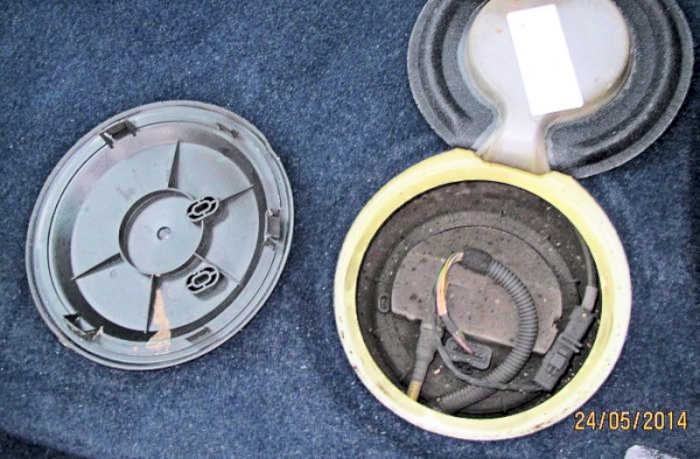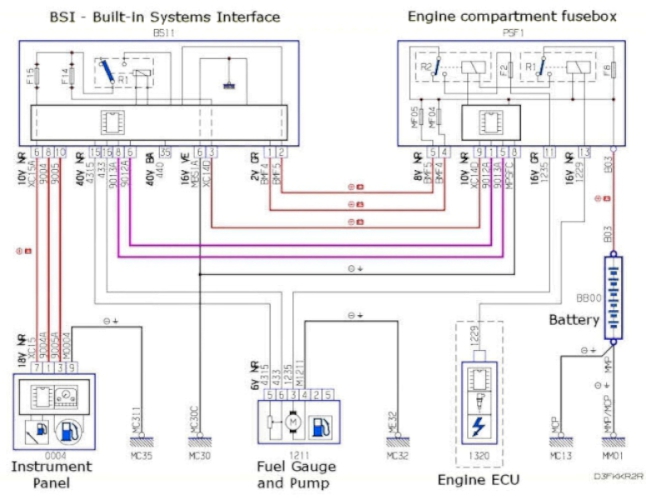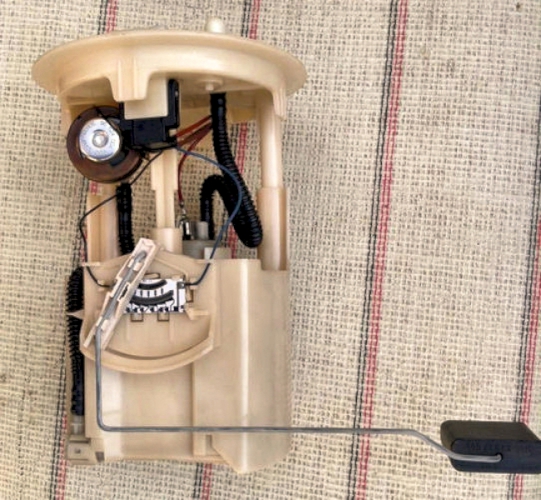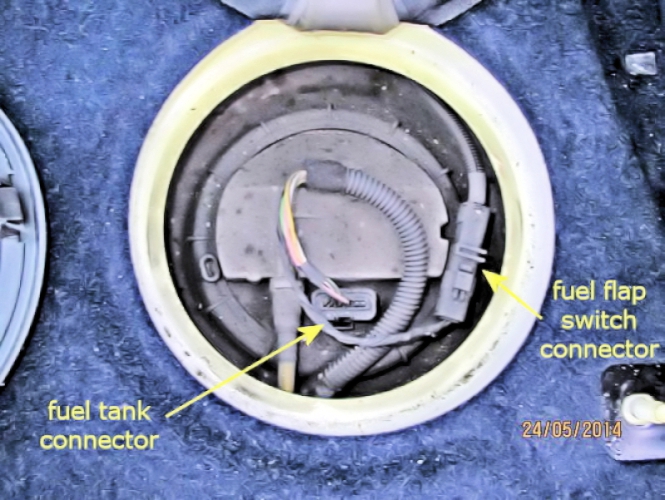Fuel Pump & Fuel Gauge Sender
Fuel Pump & Fuel Gauge sender (petrols)
Note that diesels do not have a pump in the tank

The petrol pump is in the tank and can be accessed from inside the car, under the rear left-hand seat (right-hand if looking from the front).
Fuel tank holds 40 litres (8.8 gallons) of fuel (Diesel or E10 Petrol).
Drawing shows wiring to the fuel pump - the pump should receive full battery volts via relays and fuses

Push the left rear passenger seat right back; underneath is a circular flap.
when this flap is lifted, you will see a circular cover. Remove this and you will see the top of the fuel tank.
Warning: empty the tank first and then bear in mind there will still be petrol vapour in the confined space. Leave it for a few days with the doors open before going any further
A hammer and a blunt rod will do with some patience but this tool would be better.
A new lid cover and a seal is a must, ensure seal is located perfectly in position before tightening the lid cover, as a spring mechanism pushes it out. Thus a constant pressure exerted downward on the lid as it is closed evenly at the same time. Without the above tool it can take a bit of creativity to get it done properly.
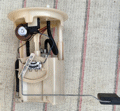
Carefully lift out the pump taking care not to bend the float lever.
Check for cracks were the pipes come out, they tend to crack and leak at that point. Reinforce any repairs with a strong epoxy.
Diesels only: Problem reported on a 1.4 HDi 2008
After injectors as well as the catalyst and all engine oil filters replaced. No problem when driven in the city however on the main roads, after up to speed there is a hesitation in acceleration.
Possible explanation:
If it's running ok around town and the injectors and the fuel pressure sensor in the rail have been replaced, the next best guess would be the fuel filter.
Modern diesel is now up to 10% organic. Bacteria and the additives to prevent freezing are increasingly causing fuel flow problems, particularly for cars with NO lift pump.
After that you should look again at the high pressure pump and the fuel pressure regulator or prop valve attached to it. This works with the ecu and the rail pressure sensor to keep the fuel pressure within parameters. Should the pressure exceed set parameters the ecu either shuts the injectors off or reduces power output. The prop valve can be swapped without the need to change the pump.
